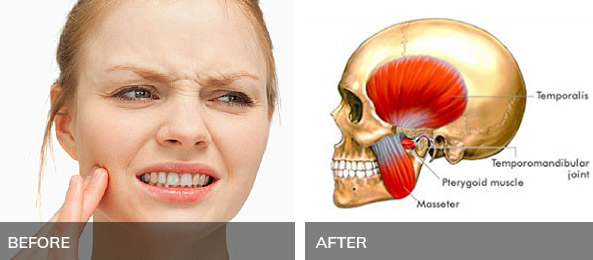TMJ Disorders
Tmj Disorders Are A Group Of Conditions That Cause Pain
The temporomandibular joints, called TMJ, are the joints and jaw muscles that make it possible to open and close your mouth.
TMJ Disorder Treatment in Coral Gables, Hialeah, Kendall & Hollywood, FL
The temporomandibular joints, called TMJ, are the joints and jaw muscles that make it possible to open and close your mouth. Located on each side of the head, your TMJ work together when you chew, speak or swallow and include muscles and ligaments as well as the jaw bone. They also control the lower jaw (mandible) as it moves forward, backward and side to side.

Symptoms of TMJ Disorders
Dr. Claudio Miro
A variety of symptoms may be linked to TMJ disorders. Pain, particularly in the chewing muscles and/or jaw joint, is the most common symptom.
Treatment stages:
Jaw muscle stiffness.
Limited movement or locking of the jaw.
Painful clicking, popping or grating in the jaw joint when opening or closing the mouth.
Schedule Your next Appointment with us.

TMJ Disorders
Dr. Claudio Miro
TMJ disorders are a group of conditions that cause pain and dysfunction in the jaw joint and the muscles that control jaw movement.
Treatment stages:
Injury to the jaw area.
Tooth and jaw alignment.
Stress and teeth grinding.
How are TMJ disorders diagnosed?
Currently, the process is to note the patient’s description of symptoms, take a detailed medical and dental history, and examine problem areas, including the head, neck, face, and jaw. Imaging studies may also be recommended.
The short-term use of over-the-counter pain medicines or nonsteroidal anti-inflammatory drugs (NSAIDs), such as ibuprofen, may provide temporary relief from jaw discomfort. Your dentist may prescribe stronger NSAIDS if necessary.
What if I’m Not Sure I Want Surgery?
In most cases, the pain and discomfort associated with TMJ disorders is temporary and can be relieved with self-managed care or nonsurgical treatments.
I’ve tried everything and nothing helps!
Surgical treatments have been found to help some people when more conservative measures have failed them.
Should I contact my dentist if I think I have TMJ?
If you are experiencing pain and/or discomfort around your jaw area in general or when chewing or swallowing then you should contact your dentist to set up an appointment.
If you would like to schedule a consultation at one of our four convenient locations:
Coral Gables (305) 701-1932 | Hialeah (305) 701-1935 | Kendall (305) 701-1924 | Hollywood (954) 799-9369


